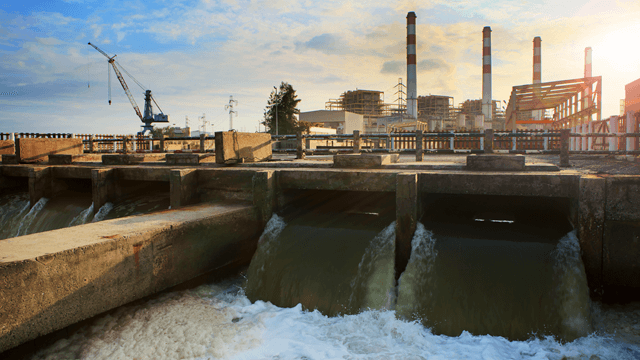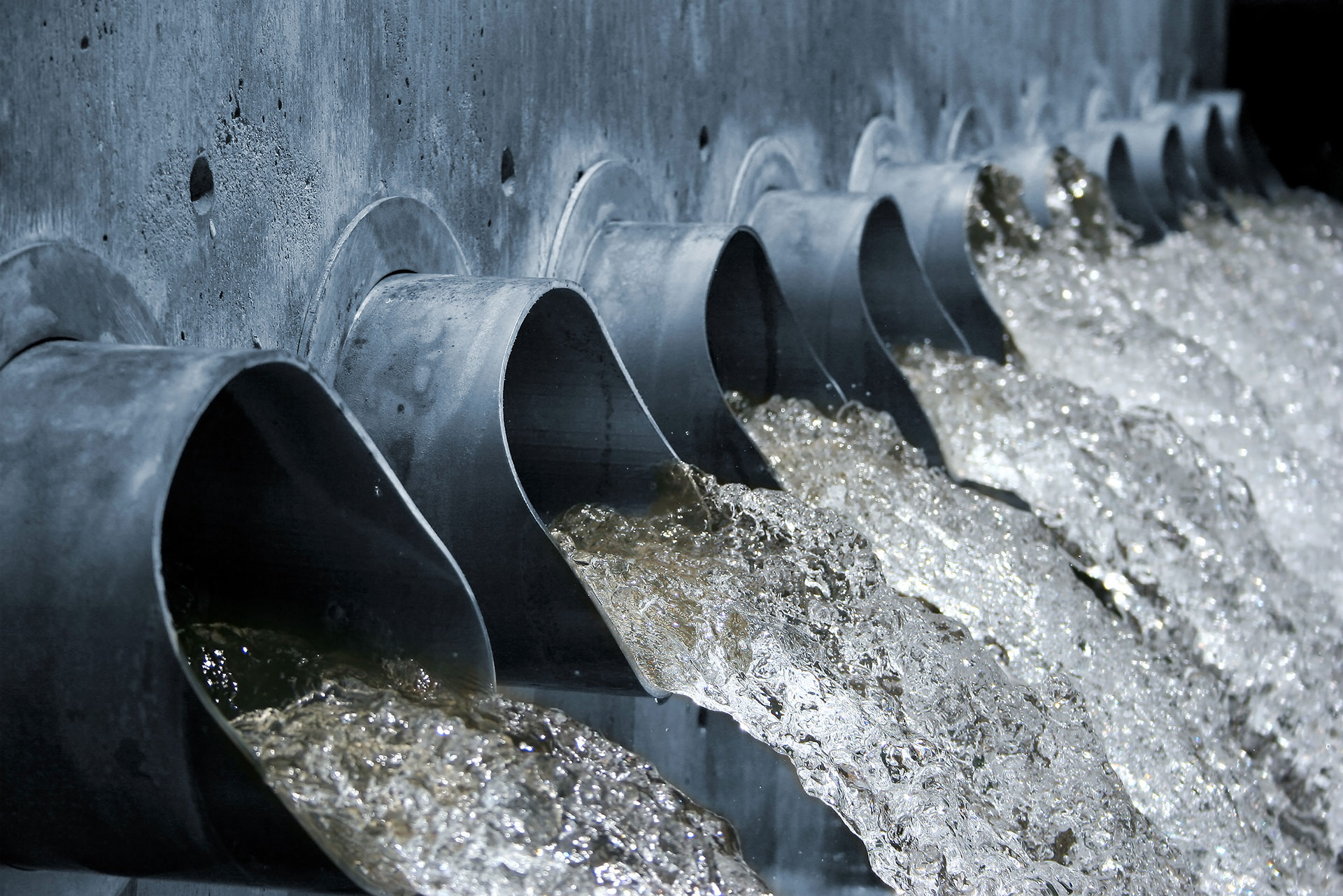Industrial Waste Water Treatment-- Customized Solutions for Effective Wastewater Treatment
Industrial Waste Water Treatment-- Customized Solutions for Effective Wastewater Treatment
Blog Article
Key Methods in Hazardous Waste Water Treatment Procedures
The therapy of industrial wastewater is a critical aspect of ecological monitoring, entailing a range of techniques created to mitigate the effect of contaminants. From the essential physical approaches that separate solids to the advanced chemical and biological procedures that target details contaminants, each technique plays an essential function in accomplishing water quality criteria. In addition, developments in technologies such as membrane purification and progressed oxidation procedures offer ingenious services for enhancing therapy efficacy. Recognizing just how these techniques adjoin and their ramifications for sustainability raises crucial questions regarding the future of wastewater monitoring in market.
Physical Treatment Methods
Exactly how properly can physical treatment techniques resolve the complexities of commercial wastewater? Physical treatment approaches play a pivotal duty in the preliminary phases of wastewater management, focusing mostly on the removal of solids and large particulates. Strategies such as filtration, flotation, and sedimentation are vital for minimizing the focus of suspended solids, thereby improving the performance of succeeding treatment procedures.
Sedimentation involves the gravitational settling of solids, permitting for the splitting up of much heavier products from the wastewater. This approach is particularly efficient in making clear water prior to chemical or biological treatments.
Furthermore, flotation approaches, which make use of air bubbles to lift suspended solids to the surface area for elimination, work in treating wastewater with high concentrations of fats, oils, and greases. On the whole, physical treatment techniques act as a vital very first step in the comprehensive management of industrial wastewater, guaranteeing that the load on succeeding therapy phases is minimized and enhancing total therapy efficacy.
Chemical Therapy Techniques
While physical therapy approaches prepared for effective wastewater management, chemical treatment strategies are crucial for attending to the much more complicated contaminants typically found in industrial effluents. These approaches utilize different chemical representatives to speed up, neutralize, or oxidize hazardous compounds, making certain a much more detailed removal of toxins.
One typical approach is coagulation and flocculation, where chemical coagulants such as aluminum sulfate or ferric chloride are included to advertise the aggregation of suspended particles. This process boosts solid-liquid separation, reducing turbidity and enhancing water high quality. Furthermore, neutralization processes are utilized to adjust the pH of wastewater, using acids or bases to reduce the effects of acidic or alkaline streams, specifically.
Oxidation-reduction responses play a crucial function in derogatory natural pollutants and pathogens. Chemical oxidants like hydrogen, chlorine, or ozone peroxide are utilized to break down complicated natural compounds, making them much less hazardous or extra eco-friendly. Additionally, advanced oxidation processes (AOPs) incorporate several oxidation methods to enhance toxin removal effectiveness.
Biological Treatment Procedures
The efficiency of wastewater therapy is considerably boosted by biological therapy procedures, which harness the natural metabolic tasks of microorganisms to decompose organic issue and get rid of contaminants. Industrial Waste Water Treatment. These procedures largely include anaerobic and aerobic digestion, each tailored for particular sorts of wastewater
Cardiovascular treatment processes make use of oxygen to sustain microbial growth, promoting the malfunction of natural toxins right into co2 and water. Typical techniques include triggered sludge systems, where oygenation tanks help with the blending of wastewater with microbes, and trickling filters, which motivate biofilm development on media surfaces.
On the other hand, anaerobic therapy processes happen in the lack of oxygen, using anaerobic germs to disintegrate natural issue, causing biogas manufacturing, a sustainable energy resource. Anaerobic digesters are typically utilized in industrial settings for this function, effectively decreasing the volume of sludge while producing valuable biogas.
The option of an organic treatment technique find this relies on wastewater features, treatment goals, and regulative standards. The assimilation of organic processes in wastewater treatment not only you can check here enhances pollutant removal efficiency however likewise promotes sustainability by lessening chemical use and supporting source healing.
Advanced Oxidation Processes

Common AOP strategies consist of Fenton's reagent, ozonation, and photocatalysis. Fenton's reagent, a mix of hydrogen peroxide and ferrous iron, militarizes the formation of hydroxyl radicals, making it effective for treating wastewater containing phenolic compounds and other recalcitrant substances. Ozonation uses ozone as a powerful oxidant, with the ability of weakening a wide variety of organic contaminants while at the same time decontaminating the effluent. Photocatalysis utilizes light-activated catalysts, such as titanium dioxide, to improve oxidation responses and remove pollutants.
AOPs supply numerous benefits, including lowered sludge manufacturing and the capacity to treat wastewater with high focus of organic toxins. The application of AOPs needs mindful factor to consider of operational parameters and cost-effectiveness, making sure that these innovative methods are suitably incorporated into existing wastewater therapy systems.
Membrane Layer Purification Technologies

Microfiltration is efficient for getting rid of suspended solids and microorganisms, while ultrafiltration targets smaller natural molecules and viruses. Nanofiltration bridges the void between ultrafiltration and reverse osmosis, efficiently removing divalent ions and organic substances. Reverse osmosis offers the highest degree of filtration, made use of primarily for desalination and getting rid of mono-valent ions.
Membrane innovations use numerous benefits, consisting of low power consumption contrasted to standard treatment methods, modular design for scalability, and the capacity for water recuperation and reuse. Nonetheless, obstacles such as membrane layer fouling and the requirement for normal maintenance have to be resolved to make sure system efficiency. On the whole, membrane purification innovations represent an essential part of contemporary industrial wastewater treatment methods, advertising sustainability and source preservation in water administration.
Final Thought
In final thought, industrial wastewater therapy uses a diverse range of techniques, including physical, chemical, organic, and progressed approaches. Each technique plays a crucial function in efficiently addressing numerous pollutants, improving water high quality, and advertising source sustainability. The integration of these methods fosters a detailed therapy strategy, making sure that commercial effluents fulfill regulative criteria while minimizing environmental impact. Proceeded advancements over at this website in these techniques will better improve the efficiency and performance of wastewater treatment processes in commercial settings.
The treatment of commercial wastewater is an important aspect of ecological management, entailing a variety of techniques created to alleviate the influence of pollutants.How efficiently can physical treatment techniques attend to the intricacies of industrial wastewater?Advanced oxidation procedures (AOPs) stand for an advanced method in industrial wastewater therapy, developed to effectively break down natural toxins that are often immune to standard therapy methods (Industrial Waste Water Treatment).In conclusion, industrial wastewater therapy uses a varied array of methods, consisting of physical, chemical, biological, and advanced techniques. Continued innovations in these methodologies will certainly better boost the efficiency and effectiveness of wastewater therapy procedures in industrial settings
Report this page